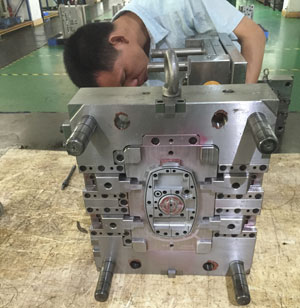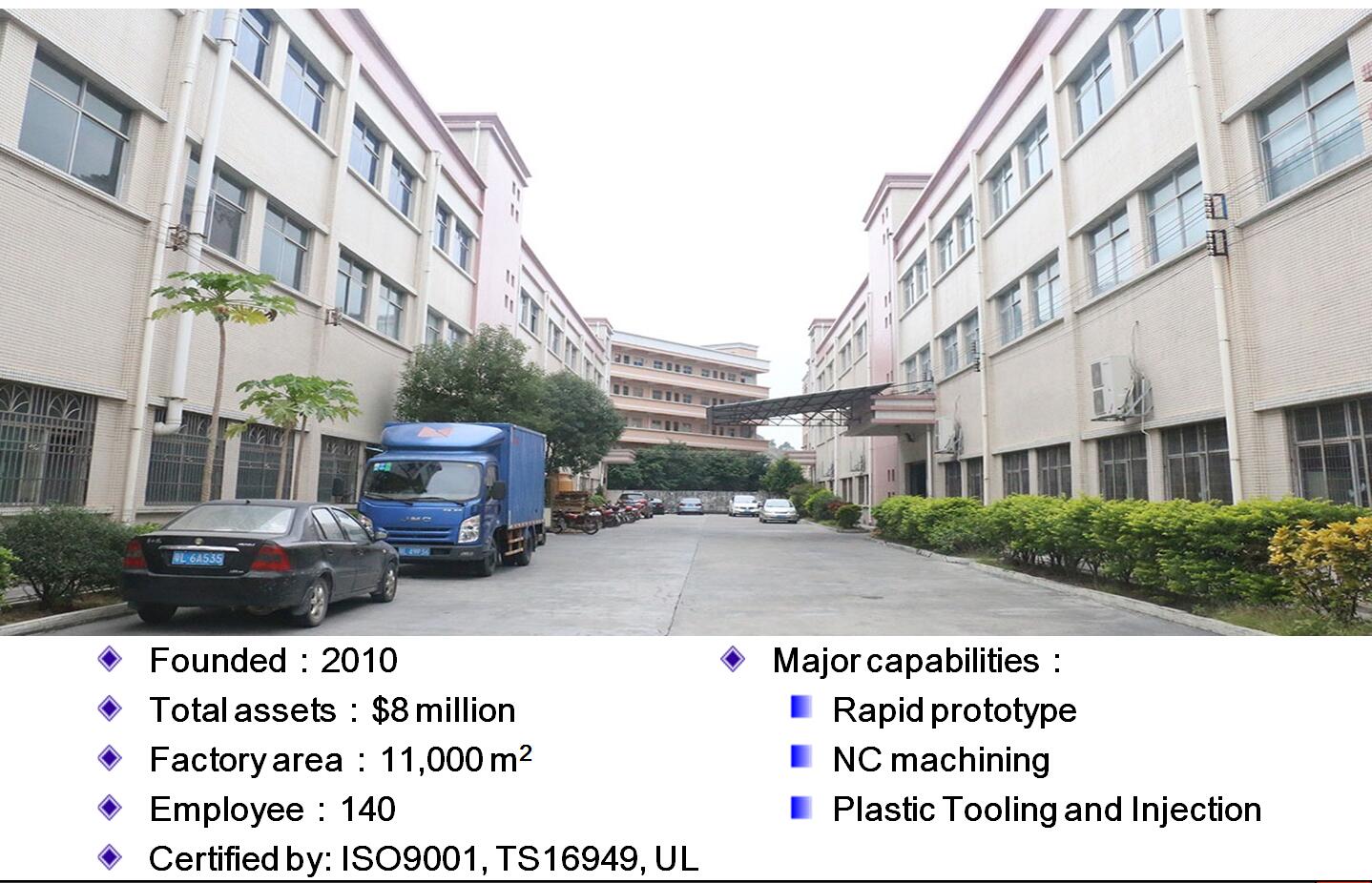金型を研磨する主な目的は次の2つです。, 1つはプラスチック金型の明るさと美しさを高めることです. 2つは、ダイを簡単にダイアウトできるようにすることです。. 研磨の過程で, 機械加工された金型キャビティ面の粗研削には粗油砥石が使用されます。, ツールマークまで研削, 次に、細かいオイルストーンを使用して、粗いオイルストーンをトレースに到達させます, then the fine sand paper is used to grinding the surface of the fine oil stone, and then the polishing paste or the grinding paste is used. The surface of the mold cavity is finally polished and polished. 射出プロセスは、金型がプラスチックまたは金属製品を製造するためのツールであることを説明しています, the effect of bright mirror is achieved.

金型製作
日常生活の中で, our common plastic mold has six polishing methods:
- Mechanical polishing
Mechanical polishing is a smoothing method to get smooth surface by cutting, plastic deformation of material surface and removing the bump after being polished. 一般に, oil stone strip, wool wheel and sand paper are used for manual operation. Special parts, such as back body surface, can use auxiliary tools such as turntable, and the high quality of surface surface can be used for polishing and polishing. . The ultra precision polishing is a special abrasive tool, which is tightly pressed on the workpiece surface to rotate at high speed in the abrasive polishing fluid. Using this technology, the surface roughness of Ra0.008 M can be achieved, which is the highest among all kinds of polishing methods. This method is often used in optical lens moulds.
- Chemical polishing
Chemical polishing is to allow the material to protrude preferentially in the concave part of the surface in the chemical medium, so that the smooth surface can be obtained. The main advantage of this method is that it does not need complex equipment, can polish complex workpiece, and can polish many workpieces simultaneously, with high efficiency. The key problem of chemical polishing is the preparation of polishing solution. The surface roughness obtained by chemical polishing is generally 10 m.
- Electrolytic polishing
Electrolytic polishing is basically the same as chemical polishing, あれは, by selectively dissolving the tiny protruding part of the material surface, making the surface smooth. Compared with chemical polishing, the effect of cathode reaction can be eliminated and the effect is better. The electrochemical polishing process is divided into two steps:
(1) the macro leveling dissolve product diffuses into the electrolyte, and the surface roughness of the material decreases, Ra>1 mu m.
(2) low light level anode polarization, surface brightness increased, Ra<1 m.
4, ultrasonic polishing
The workpiece is placed in the slurry suspension and placed in the ultrasonic field together, and the abrasive is grind and polish on the workpiece surface by the oscillating action of the ultrasonic wave. Ultrasonic machining has little macroscopic force and will not cause deformation of workpiece, but the manufacture and installation of tooling are more difficult. Ultrasonic machining can be combined with chemical or electrochemical methods. On the basis of solution corrosion and electrolysis, the ultrasonic vibration stirring solution is applied to dissolve the dissolving products on the surface of the workpiece, the corrosion or the electrolyte is uniform near the surface, and the cavitation effect of ultrasonic in the liquid can also inhibit the corrosion process and be beneficial to the light brightening of the surface.
- Fluid throwing
Fluid polishing is achieved by polishing the surface of the workpiece by means of high-speed flowing liquid and its abrasive particles. Common methods are abrasive jet machining, liquid jet machining, fluid dynamic grinding and so on. Hydrodynamic grinding is driven by hydraulics, so that liquid media carrying abrasive particles can flow across the workpiece surface at high speed. The medium is mainly made of special compound (polymer like substance) with good flowability under low pressure and mixed with abrasives. Silicon carbide powder can be used for abrasive.
- Magnetic abrasive polishing
Magnetic abrasive finishing is to use magnetic abrasive to form abrasive brush under the action of magnetic field and to grind the workpiece. This method has high processing efficiency, 良品質, easy control of processing conditions and good working conditions. With suitable abrasives, the surface roughness can reach Ra0.1 m.

JasonMould Industrial Company Limited, に設立されました 2010, 中国の大手射出成形メーカーです. JasonMould は、家電製品のプラスチック金型の製造を専門としています。, 医療機器, 電子機器, 安全装置および監視システム.
会社は終わった 15000 平方メートル工場. 異なる機械と専門知識を持つプラスチック射出成形部門と, JasonMould は、小型で精密な携帯電話部品から自動車部品と同じくらい大きな部品まで、ツールを提供しています。. 当社の工具は主に米国に輸出されています。, ヨーロッパ, 日本と英国. JasonMould の多角化戦略とフルサービスは、世界中の顧客から称賛を集めています。.
私たちの使命は、お客様に高品質の成形製品とサービスを提供することです. お客様の価格に対する期待を超えることを目指しています, 品質と納期厳守. 私たちの使命を達成するために, ジェイソンモールド:
- 従業員のスキルと効率を継続的に改善することを約束します,
- 従業員に清潔で安全な作業環境を提供します,
- 厳格なメンテナンスプログラムにより、機械技術とサポート機器をアップグレードします, そして
- お客様のツールを最高のパフォーマンスに維持します
プラスチック成形製品のカスタムメーカーの詳細については,来てください https://www.jasonmolding.com/
お問い合わせ先:
連絡窓口: ジェームズ・ユアン
会社名: JasonMould Industrial Company Limited
住所: 竜崗村,Long西町,博羅県,恵州市,広東省, 中国
電話: 86-752-6682869
Eメール: [email protected]
Webサイト: https://www.jasonmolding.com


